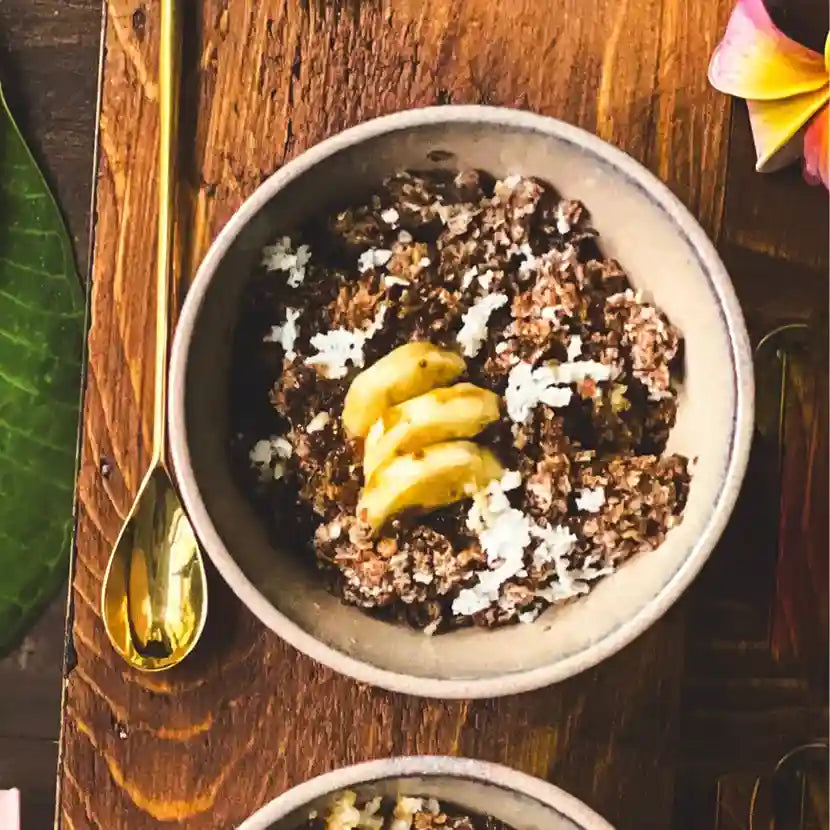Whether it's your family, friends, or even yourself dealing with it, Type 1 diabetes can tug at the heartstrings. And get this – a whopping 422 million folks worldwide are wrestling with diabetes, according to the World Health Organization.
Dealing with this condition means your body hits a pause on insulin production, leading to the insulin injection routine. But hey, it's not just about needles and pumps; what you eat matters too. And guess what? While diabetes might be hanging around, it doesn't have to be the boss of your life.
So, in this blog, we'll talk about some yummy food options specially crafted according to a Type 1 diabetes diet. From crunchy dry fruits to finding the perfect flour, we’re here to make this journey a little easier and a lot tastier for you!
Ready to take charge? Let’s begin!
5 Foods for Type 1 Diabetes Diet
Research says your Type 1 diabetes diet should be based on carbohydrates with fibre, and include an array of green vegetables along with whole grains, beans, lentils, and dry fruits. Let’s learn in detail how these foods will help you out:
1. Whole Grains
For folks with Type 1 diabetes, slow digestion can play havoc with blood sugar levels. But don't fret, there's a squad of foods ready to save the day! Picture whole wheat, corn, barley, oats, and quinoa as your pantry superheroes. Packed with fibre, they act like digestion traffic cops, slowing down sugar absorption.
- These foods can help to manipulate blood glucose levels due to their low glycemic index.
- The glycemic index or GI measures the carbohydrate content in their ingredients. It tells you the way a lot of food will increase your blood sugar stage.
- Since whole grains have minimal impact on blood sugar levels, they are a healthy choice for a Type 1 diabetes diet.
You can add more whole grains to your diet by:
- Substituting white rice with whole grain rice.
- Use whole wheat Khapli flour instead of refined flour for baking.
- Including oats porridge and whole grain cereals in your meals.
- Substituting white bread with whole grain bread.
Besides our trusty whole grains, there's a whole world of fibre-rich goodness waiting to be explored. How about adding some legumes into the mix?
2. Beans and Lentils
Ah, navigating the culinary landscape with diabetes can feel like tiptoeing through a minefield, right? But fear not, we're on a quest for satisfying alternatives that'll keep you feeling full for the long haul!
- Enter bean- a superfood for diabetics. They have a low glycemic index, which helps to control blood sugar spikes better than other carbohydrate-containing foods.
- Moreover, individuals with Type 1 diabetes can also include legumes in their diet. These food options in your Type 1 diabetes diet plan are a potent source of fats, protein, and fibre, which may reduce the risk of coronary heart disease.
Additionally, they're versatile, so you can add them to salads and soups. The soluble fibre in lentils stabilises blood sugar spikes and may improve glycemic levels.
Since we are talking about a holistic diet, it will remain incomplete without vegetables. Come, let’s see how these vegetables affect our blood sugar levels and improve our health.
3. Green Leafy Vegetables
Veggies are like the unsung heroes of the dietary world, especially for folks with diabetes. They're low in calories and packed with essential nutrients, making them a powerhouse addition to any meal plan.
The high level of antioxidants and magnesium helps to lower diabetes complication risks.

For instance, spinach is a water-soluble vegetable and has minimal side effects on blood sugar. Additionally, you can enjoy a Type 1 diabetes diet plan like making soups, salads and curries with them.
Spinach has a low glycemic index and high fibre content, along with essential nutrients.
|
Fact Check: Did you know that spinach owes some of its superfood status to its impressive iron content? While Popeye may have exaggerated its effects a bit, spinach is indeed rich in iron, which is essential for healthy red blood cells. |
Additionally, vegetables are a rich source of minerals, antioxidants, and vitamins, helping to reduce the risk of Type 1 diabetes complications such as heart disease and nerve damage.
They are also rich in fibre which aids digestion by slowing down the absorption of glucose, promoting satiety, and assisting with weight management.
When it comes to crafting a well-rounded Type 1 diabetes diet, variety is the name of the game. And while we're jazzing up our meal plan with a rainbow of veggies, let's not forget about the delicious addition of dry fruits!
4. Dry Fruits
A handful of cashews, a small bunch of peanuts, or a couple of almonds– these are your secret weapons. Not only do they pack a punch of nutrients and flavour, but they also help keep you feeling satisfied without wreaking havoc on your blood sugar.
Add cashews to your Type 1 diabetes food list as they have a great chance of improving HDL or high-density lipoprotein (“good cholesterol”).
- A study found Type 2 diabetics consuming cashew-supplemented meals experienced lowered blood pressure and increased HDL cholesterol after 12 weeks.
- Peanuts, with a low glycemic index of 14, offer slower blood sugar rises, suggesting nuts could benefit diabetes management. It is a potent source of protein and fibre. It is therefore very crucial to include it in your diet.
- The importance of diabetic diets is not only about providing the essential nutrients. It also encompasses the ability to lose weight and stay in shape. Thankfully, peanuts aid in weight loss by lowering the risk of heart problems.
And now, for the grand finale of our food journey – a dairy delight!
5. Dairy Foods
Ah, the classic mom advice: "Finish your milk, it'll make your bones strong!" And guess what? That's true! But did you know that milk can also help keep your blood sugar levels in check? Yep, it's like a double whammy of health benefits in a single glass!
Milk is a famous source of calcium. It is also rich in protein and vitamins and a perfect tonic for those dealing with Type 1 diabetes.
One cup of whole-fat milk has:
- 60 calories
- 3.2 grams of fat
- 4.63 grams of carbohydrates
Some essential minerals in milk can help the health of a Type 1 diabetes patient. For instance,
- Its rich content of calcium, vitamin D, and protein vital for bone health, immune function, and muscle strength.
- The protein present in milk may stabilise blood sugar levels. It does so by slowing down the absorption of carbohydrates.
- Additionally, the combination of carbohydrates and protein in milk helps in managing blood sugar levels.
You can also choose milk products like A2 cow ghee. It aids digestion, boosts immunity, and lowers the glycemic index, benefiting diabetics.
This ghee is made with the Bilona method which preserves all its essential nutrients. The fat-soluble vitamins (A, D, E, K, B12), omega-3 fatty acids, and butyric acid enhance overall immunity, combating diabetes-related issues.
Remember that modеration is crucial for a Type 1 diabetes diet.
Health Note: Always check your blood sugar level. Symptoms of high blood sugar include
Increased thirst and a dry mouth, needing to pee frequently, tiredness, blurred vision, and more.
Alternatively, low blood sugar levels may result in feelings of hunger, trembling or shaking, and sweating. Consult a doctor immediately.
FAQs: What to Eat for Type 1 Diabetes Diet and More Health Tips
How to control Type 1 diabetes?
The long-term cure is insulin therapy. Such patients can also make minor changes in their lives by turning to a diabetes-friendly diet. Choose a meal plan rich in protein.
Is there a cure for juvenile diabetes?
Unfortunately, there is no permanent cure for this. But with proper diet, medication, and plenty of exercise, people with this condition can still live long and healthy lives.
Is Type 1 diabetes hereditary?
While genes play a role in developing Type 1 diabetes, environmental factors are also responsible. For a man with diabetes mellitus, the chances of your child developing it are 1 in 17. For a woman, it is 1 in 25.
Conclusion
If you live with diabetes, your well-being depends on a culmination of a few factors. These include genetic hereditary, environmental, lifestyle, and of course your diet. Curating a Type 1 diabetes diet is not enough, you need to also exercise and stay fit.
When you make a diet plan, ensure that your foods are from reliable and naturally grown sources. With the options at Two Brothers Organic Farms, you can take a step towards a healthier and more balanced life.













